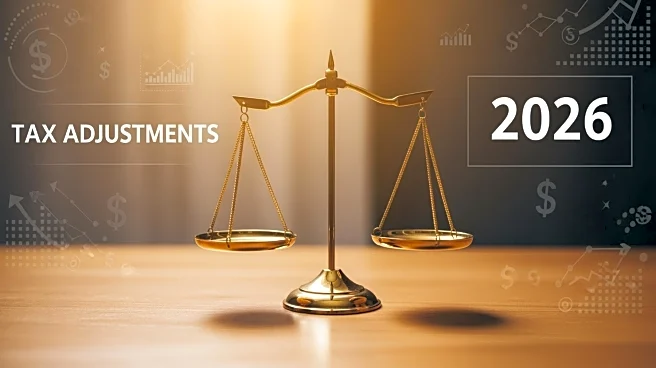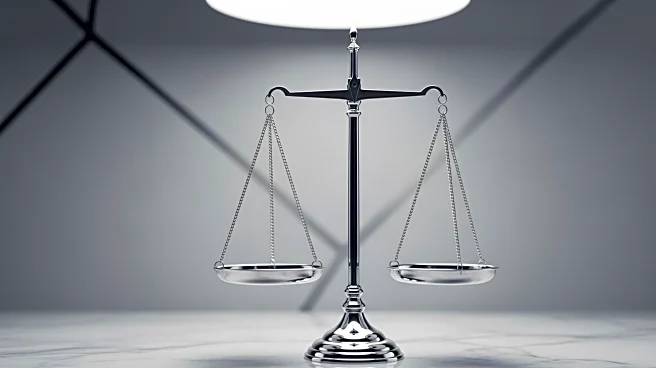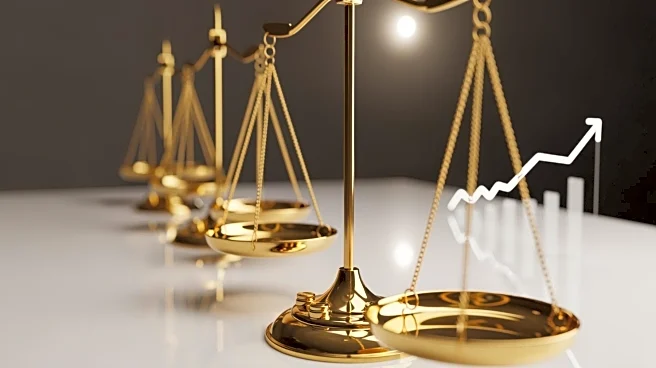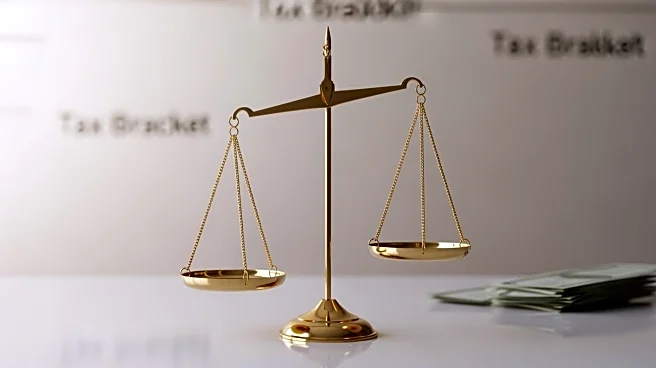What's Happening?
The Internal Revenue Service (IRS) has announced adjustments to the tax brackets for the year 2026, which could result in lower taxes for some individuals. These changes are part of the IRS's annual adjustment for inflation,
ensuring that taxpayers who report nominally higher incomes do not automatically move into higher tax brackets without an increase in their purchasing power. For instance, an individual earning $100,000 in 2026 will owe approximately $13,170 in federal income tax, which is $279 less than what they would have owed in 2025. The IRS has also increased the standard deduction by 7.3% for all filers compared to 2025, with married couples filing jointly seeing a deduction of $32,200, single taxpayers $16,100, and heads of households $24,150. These changes come despite a government shutdown that has affected IRS operations.
Why It's Important?
The adjustment of tax brackets is significant as it directly impacts the financial obligations of taxpayers across the United States. By accounting for inflation, the IRS helps prevent 'bracket creep,' where taxpayers could be pushed into higher tax brackets without a real increase in income. This adjustment can lead to potential savings for taxpayers, especially those near the top of their current tax brackets. The increase in the standard deduction also provides additional relief, allowing taxpayers to reduce their taxable income further. These changes are particularly relevant in the context of economic challenges, such as inflation, that affect household budgets.
What's Next?
Taxpayers will need to consider these changes when planning their finances for the upcoming year. As the new tax brackets and standard deductions take effect, individuals and tax professionals will need to adjust their strategies to optimize tax savings. The IRS's ability to implement these changes amid a government shutdown highlights the importance of these adjustments in maintaining fiscal stability. Stakeholders, including tax professionals and policymakers, will likely monitor the impact of these changes on revenue and taxpayer behavior.












